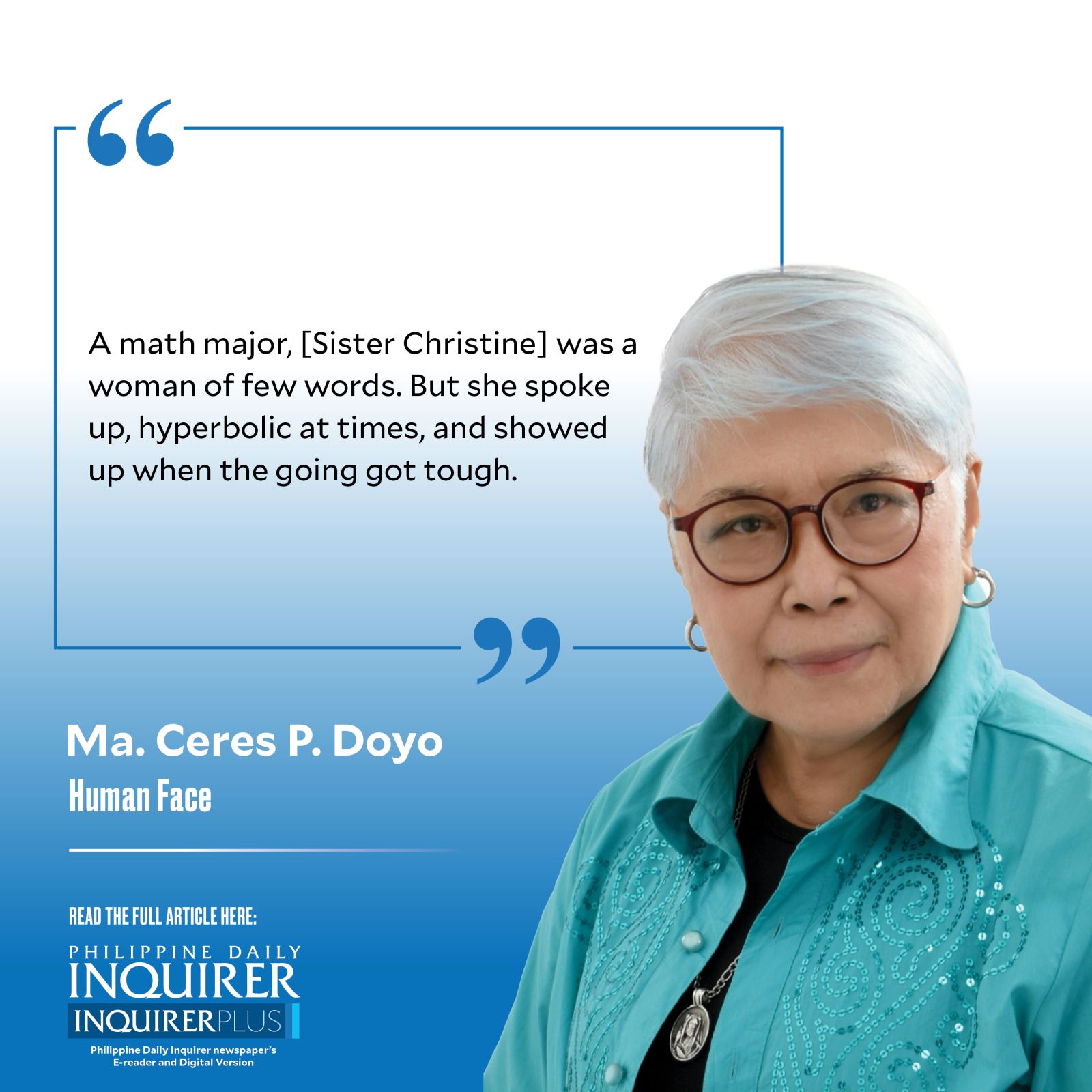
Today, 6th of October, is the 20th death anniversary of Sister Mary Christine Tan, Religious of the Good Shepherd, the first Filipino provincial superior of the RGS in the Philippines, chair of the Association of Major Religious Superiors of Women in the Philippines during the dark years of the Marcos dictatorship. She is one of nine religious sisters whose names are etched on the Wall of Remembrance at the Bantayog ng mga Bayani in Quezon City. Fifteen are those of churchmen who also had fought for the restoration of democracy while the country was under martial rule from 1972 to 1986. Those 24 names are among the more than 300 on the wall, names of persons who had risked and lost their lives, some of whom I had met or known personally.
Sister Christine was a close friend of Ninoy and Cory Aquino. She stood by them when, Ninoy then in prison, it was not the popular thing to do. After the inglorious end of the Marcos dictatorship and the rise of Cory Aquino to the presidency, Sister Christine became a member of the Constitutional Commission that drafted the 1987 Constitution. A math major, she was a woman of few words. But she spoke up, hyperbolic at times, and showed up when the going got tough. I should mention that besides the three vows of chastity, poverty, and obedience, the RGS has a fourth vow of zeal.
I celebrate Sister Christine’s life in these times when the church sector, the leadership especially (do they have a vow of silence?), is sorely lacking in voice and verve on issues that plague the most vulnerable and deprived among us, when integrity and truth in government have left the building.
I had long conversations with Sister Christine (I have her on tape) and written about her. We broke bread together regularly in quaint places. She allowed me to visit her regularly when she was ill. After Sister Christine passed away in 2003, I thought of writing a book on her as I had in my possession documents related to her, among them, her clash/exchange with a cardinal in the Roman Curia, how she was summoned to Rome to explain her militant leadership, how she stood her ground, etc. Oh, how she relished telling that story.
Instead of a book solely about her, I decided that it was best if her story was read alongside 40 other stories about church people and their heroic service to society. Her story is in my book “You Can’t Interview God: Church Women and Men in the News,” (Anvil, 2013). Her face, along with several others, is on the one-of-a-kind cover. (You can order the book online.)
On a personal note, Sister Christine was the one who started me off in risky human rights work that led me to far-flung places and writing dangerously. She did rescue me twice from the clutches of the enemy. First, when a colleague and I were seized by armed military men while I was driving with a carload of “Iron Hand, Velvet Glove,” a damning publication hot off the press about the Marcos dictatorship. She rushed to where we were being held and talked the arresting men into letting us go. After I was interrogated for several hours (re the militarization stories I had written in mainstream media, a no-no!) by seven high-ranking military officials in Fort Bonifacio, I found her outside the door waiting in case I would be brought to the stockade. She is one of three older women who had made a life-long impact on my vocation. That is a long story to tell.
I remember Sister Christine in a regular huddle with the likes of Maryknoll’s Sister Helen Graham and ICM Sisters Emelina Villegas and Teresita Agustines to plan the next issues of “Ichthys,” a sub rosa publication named after the secret fish symbol of the underground early Christians. Truth was under siege then and I did my part to get “Ichthys” to readers. Ask me how.
No longer in a leadership position, Sister Christine delved deep into Asian spirituality, she traveled carrying with her the cries of a country in travail, pondered in prayer the words of Jesus, the Buddha, Tagore, Gandhi. She then plunged headlong into critical issues such as nuclear arms, poverty, and livelihood for the needy. Yes, she had bouts of disillusionment that could have pushed her to take the nearest fork on the road. “It is better to work for changes from the inside,” was a reason why she stayed. Despite her comfortable upbringing and frail health as a kid, Sister Christine, along with several RGS sisters, chose to move to the slums of Leveriza in Malate where “I have found the God I have not known before.” She lived and worked among the poor for more than 20 years until her death in 2003, shortly before turning 73.
From Rabindranath Tagore’s “Gintanjali,” her prayer: “I will deck thee with trophies, garlands of my defeat … my life will burst its bonds in exceeding pain … From the blue sky an eye shall gaze upon me and summon me in silence. Nothing will be left for me, nothing … ”
—————-
Send feedback to cerespd@gmail.com

